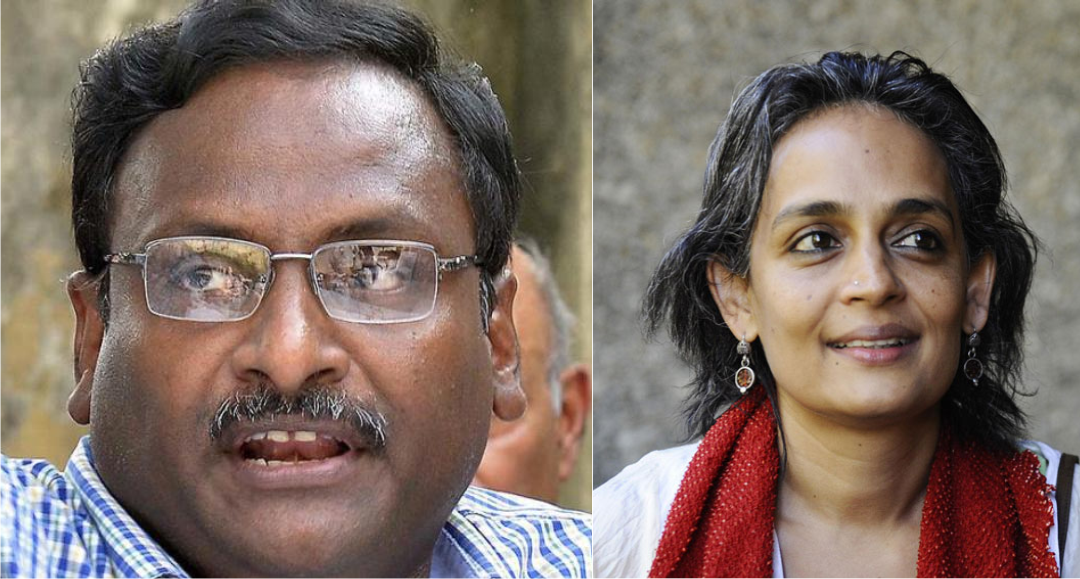
“While it is necessary to keep alive good deeds, it is also essential
to destroy wicked people.”
Yajurveda, 20/25[1]
The poisoner, the incendiary,
The robber, and who so ever commits assault
With lethal weapon, and the ravisher,
And one who tries by force to oust from land
These should be slain unhesitatingly
(Mahabharata) – quoted in Essential Unity of
All Religions by Bharat Ratna Bhagwan Das[2]
On the fateful day of February 27, 2002, I was serving as Additional Director General of Police, Armed Units (ADGP-AU), operating from Police Bhavan, Gandhinagar, Gujarat Police Headquarters, supervising the administration of 11 State Reserve Police Force (SRPF) Battalions. Knowing about the death of 58 Kar Sevaks (one injured died later), returning from Ayodhya after attending the VHP-sponsored Kar Seva, at Godhra Railway Station by local Muslims, on DGP K Chakravarthy’s order, total mobilization of SRPF personnel was carried out.
Later in the day, when I met DGP in his chamber he told me that Rajendra Kumar, Joint Director, Subsidiary Intelligence Bureau (SIB), Ahmedabad (in charge of Central IB Unit of Gujarat State, Daman, Diu and Nagar Haveli), informed him directly, that he had come up with a theory of Inter-Service Intelligence (ISI), Pakistan’s major Intelligence Agency, being responsible for the Godhra train fire incident. Rajendra Kumar wanted the Gujarat Police to investigate further to uncover this conspiracy angle. (Rajendra Kumar, now a retired Special Director of IB has figured in the charge sheet filed by CBI as accused for fake encounter killing of Ishrat Jahan and others). I told the DGP that police should investigate with an open mind and without concrete evidence, conspiracy theory should not be accepted. (Note: The Chief Minister Narendra Modi and Union Home Minister LK Advani, had hinted about conspiracy behind the Godhra train fire incident days before this information was reflected in the case papers of Gujarat Police Investigators.)
On my suggestion that the DGP should (first) get more convincing data from Rajendra Kumar regarding the ISI conspiracy, K DGP K Chakravarthy contacted and questioned Rajendra Kumar in this matter. In response, Rajendra Kumar informed (him) that the IB had a tape of telephonic conversation by a Godhra resident after the train burning incident, to his friend in Pakistan, expressing joy and happiness over the killing of Ram Bhaktas returning from Ayodhya by Muslims in Godhra. DGP observed that this conversation itself was not sufficient to infer that attack on Kar Sevaks was an ISI conspiracy and that he would not mislead the course of investigation by Gujarat Police. He confirmed that the police, so far, had not come up with any input about conspiracy.[3]
On the evening of February 27, 2002, the Gujarat State Vishwa Hindu Parishad (VHP) had given a call for State-wide bandh as a mark of protest against Godhra killing of Hindus. Though, the call and observance of bandh had been banned by (a judgement of the) Kerala High Court, the State Government did not initiate action against the organisers and enforcers of this bandh. Though messages and instructions were sent to field officers to maintain law and order, Compulsory Standard Operating Procedure (SOP) to be adopted by jurisdictional officers of police and executive magistracy (Collectors and Sub-Divisional Magistrates) to create an ambience of peace and order were not implemented, particularly in 11 police administrative units (districts), where spine-chilling anti-minority massacre(s) were enacted.
Sequential precautionary and preventive measures are elaborated in (the) Gujarat Police Manual and compilations of Central and State Governments, namely the ‘Instructions to Deal with Communal Riots – Strategy and Approach’ by Gujarat DGP KV Joseph in 1997, ‘Communal Peace’ by MHA (Ministry of Home Affairs) and recommendations of Justice Reddy and Justice Dave Commissions, who probed into 1969 and 1984-85 communal riots in Gujarat respectively. Further, area-wise Communal Riot Schemes were also not put into operation. This lethal omission had smoothened the path of bandh enthusiasts for unleashing extreme atrocities on their targets through armed mobs.[4]
On the forenoon of February 28, 2002, I was on my way to the office in the State Police Headquarters at Gandhinagar from my residence in Ahmedabad city in a well-secured police vehicle with escort. I found bandh supporters freely moving on road equipped with sticks, shouting anti-Muslim slogans, burning tyres and waste material right on the roads and so on. They were forcing the commercial establishments including pan shops and street vendors to close down their business, in presence of inactive and unresponsive policemen, deployed on the spot and patrolling mobiles. I stopped my vehicle at a police static point and questioned policemen on duty, watching public nuisance, in front of them, silently, as to why no interventionist action, as per their duty obligations, was taken. They responded that they had no instructions in this regard from Police Commissioner of Ahmedabad city. Experienced policemen know the mob psychology of testing the mood, strategy and tactics of police and proportionately aggravating the intensity of violence, if police remained supportive of them – through petty violation of traffic rules to commission of arson, loot, assault, murder and rape, on those opposing the bandh and targeted groups. By afternoon of the day (February 28, 2002), the belligerent mobs attacked and burned trading centres owned by Muslims. Showrooms of Bata, Metro Shoes, Pantaloons and numerous hotels bearing Hindu and secular nomenclature were looted and burned down. Looters and arsonists were directed to shops, showrooms and hotels owned by Muslims by organizers of violence and mobilisers of mobs, after doing sufficient homework for selection of targets.[5]
On February 28, 2002, when I was in office, Khurshid Ahmed (IPS, 1997 batch) Commandant of SRPF, Headquartered at Saijpur Boga near Naroda Patiya, where 96 persons were killed by evening of that day, informed me by phone that about 500 Muslim families threatened by attacking mobs were seeking asylum inside the camp, secured by compound wall and armed sentries. He wanted specific orders for letting these private persons inside the SRPF Battalion Headquarters. In response, I immediately sent a fax message directing the Commandant to accommodate those seeking protection in the vacant barracks emptied by men, who were deputed to disturbed areas. In fact, the Commandant and his second-in-command DySP (deputy superintendant of police)Qureshi were in (a state of) panic (both belong to Muslim community) about the risk of their permitting Muslims, facing imminent danger, inside the campus. I assured them that none would find fault with them as they were complying with my written orders.
The State Government later claimed that 500 Muslims were saved by permitting them to stay in SRPF campus. Afterwards, I came to know that the Commandant had refused, ignoring my written orders, entry of refuge seekers in empty SRPF barracks and consequently, they had become victims of riots at the hands of marauding brigands.[6] Most of the 96 people killed in the evening in Naroda Patiya were reportedly from this group of Muslims who were denied asylum in SRPF campus. No action was initiated for defying written order of ADGP (AU) and no report was made. Reportedly, senior leaders pressurized Commandant for not permitting Muslims under attack by rioters inside SRPF campus. The State Government had subsequently posted Commandant Khurshid Ahmed in a sought after post of Deputy Commissioner of Surat city and his wife Shamina Husain (IAS, 1997 batch) as District Development Officer (DDO), Valsad district and Collector, Surendranagar district. DySP Qureshi was awarded President’s Police Medal for distinguished service, which is rarely awarded to SRPF officers, having no experience in crime policing.[7] SIT did not cite me as a witness in Naroda Patiya case. In the judgment of the case, many critical comments on the role of (the local police and) SRPF were made by the Special Judge.
I found bandh supporters freely moving on road equipped with sticks, shouting anti-Muslim slogans, burning tyres and waste material right on the roads and so on. They were forcing the commercial establishments including pan shops and street vendors to close down their business, in presence of inactive and unresponsive policemen, deployed on the spot and patrolling mobiles. I stopped my vehicle at a police static point and questioned policemen on duty, watching public nuisance, in front of them silently as to why no interventionist action, as per their duty obligations, was taken. They responded that they had no instructions in this regard from Police Commissioner of Ahmedabad city.
In the afternoon I met DGP K Chakravarthy in his chamber. I found him to be quite perturbed, helpless and stress-ridden about widespread mass violence in the cities of Ahmedabad, Vadodara and many rural areas. He lamented that things were taking a bad shape and activists of VHP, Bajrang Dal and BJP were leading armed crowds and police officers, at decisive level on the ground, were not intervening effectively as they were keen to avoid crossing swords with supporters of the ruling party. He hinted that the Chief Minister had convened a meeting of senior officers at his residence after his return from Godhra in the late evening of February 27, 2002. DGP said that the CM told officers in the meeting that “in communal riots, police normally takes action against Hindus and Muslims on one-to-one proportion, this will not do now, allow Hindus to give vent to their anger.”
The DGP added that no officer present in the meeting – PC Pande, Commissioner of Police (Ahmedabad city), Ashok Narayan, Addl Chief Secretary (Home Department), Swarankant Verma, the incharge Chief Secretary, Dr PK Mishra, Principal Secretary to CM (now he is the Additional Principal Secretary to the Prime Minister Narendra Modi) Anil Mukim, Additional Secretary to CM and K Nityanandam, Home Secretary including himself did not take any objection or speak against the illegality of this verbal instruction from CM. DGP had apologetically admitted that this posture of the CM was a major impediment in initiation of action against communal elements, perpetrating bestial brutalities on the minority community. He added that parading of dead bodies in Ahmedabad city of those killed in Godhra train fire incident, including dead bodies of those who did not belong to Ahmedabad city, had magnified communal frenzy of motivated Hindus.[8] [9]
To relieve myself of the burden of my heart, subsequently I had prepared anonymous notes on, abominable stance of police positioned in sensitive areas acting as facilitators to rioters, higher number of persons from victim community getting killed in police firing and riots, belligerent mobs shouting about police abetment to their crimes thus “it is an open secret, the police is on our side” (Yah Andar ki Baat hai, police hamara saath hai), Muslims steadily losing faith in the integrity and dexterity of State administration.
(The) Apprehension of the DGP proved to be prognostic. From the morning of February 28, 2002 morning until March 3, 2002, when Army contingents and additional personnel from Central Para- Military Forces (CPMF) (actually) commenced effective patrolling in the affected areas, there were instances of horrendous mass murders, wherever police failed to perform their mandatory duties relating to maintenance of law and order. On my return journey from Gandhinagar to Ahmedabad residence on the late evening of February 28, 2002, I found many business centres, shops, houses and colonies in minority localities looted and destroyed. Riot victim survivors had been shifted to relief camps, organized by community leaders and activists. By the evening of March 1, 2002, media reported graphic details of targeted mass murders amounting to ethnic cleansing in those areas of minority dwelling pockets surrounded by majority community settlements.
In predominantly minority-dominated areas of Dariapur, Shahpur and Juhapura, violence was negligible. To relieve myself of the burden of my heart, subsequently I had prepared anonymous notes on, abominable stance of police positioned in sensitive areas acting as facilitators to rioters, higher number of persons from victim community getting killed in police firing and riots, belligerent mobs shouting about police abetment to their crimes thus “it is an open secret, the police is on our side” (Yah Andar ki Baat hai, police hamara saath hai), Muslims steadily losing faith in the integrity and dexterity of State administration and so on. These notes, basing on my personal observation, I had dispatched to the President of India, the Opposition Leader and senior leaders of major secular political parties. I was quite aware that it was an act of misconduct as per conduct rules, but I was forced to do it for getting some solace from the intense agony and tormenting helplessness felt by me in those days, having failed to do anything, due to legal constraints, to contain and control violence against hundreds of innocents though I was moving comfortably in a police flag car with three stars, beacon light and security cover. I heaved a sigh of relief when my friend in the Rashtrapati Bhavan informed me that my anonymous notes were read by the President, who, according to him, would be writing to the Prime Minister Atal Bihari Vajpayee about his concern and anxiety on demoralizing Gujarat situation.
Modern psychology confirms that a person’s mind-set and attitude are formulated by his inherited nature and the ambience impacted on him (upbringing). Indian psychology (has) spoke(n) about ‘Vasana’ (inclination), ‘Samskara’ (acquired culture) and ‘Samsarga’ (human and material surroundings) formulating one’s basic nature and ‘constructed realities’. In retrospect, I did a self-analysis about my extreme dejection and depression about the plight of community bearing the brunt of heinous motivated crimes by Sangh Parivar activists aided by the State machinery.
Having brought up in Kerala, historically well-known for communal amity, despite the spread of Semitic religions – Christianity and Islam – contemporaneous to their germination in places of origin, I never felt about the Muslims as people belonging to ‘the other’ – a social segment alienated from Indian ethos and heritage. My close companionship with my maternal grandfather, late Balaramapuram G Raman Pillai, one of the founder leaders of Indian National Congress in erstwhile Travancore State, his undiluted commitment to secularism and socio-cultural and political camaraderie with the Muslims during the freedom struggle, had germinated in me a deeper sense of fraternity with the community. This had, however, never come in the way of my law enforcement in my police career.
Islam and Christianity reached the shores of Kerala along with the merchants and traders like Parsis did in Mumbai and Guajrat. In north India, the message of Islam came along with
invaders and conquerors, the Arabs in the 8th century (Muhammad bin Qasim) and Afghans and Turks (Muhammad of Ghor) in the closing decade of the 11th century. Repeated invasions by Sultan Mahmud of Ghazni against Gujarat, had deeply wounded Gujarati psyche, thanks to the coloured presentations on the advent of Muslims by the British and a section of Indian historians. The bitter truth and lesson of history regarding defeat of Indians by all outside invaders, irrespective of their religious persuasion, from the Persians, Alexander the Great in era Before Christ (BC) to Colonial powers of Portuguese, French and British, in modern times, on account of comparative inadequacies of Indian Army, constituted on unmerited and unscientific basis of caste, refusal of Indians to absorb fresh military technology and update the war strategy, tactics and hardware, were the main causative factors for the loss of all battles.
Is merely blaming Muslim conquerors for Indian losses, a shrewd strategy of caste Hindus, who are responsible for (the)mediocrity of Indian Army confronting the invaders, from ancient times? Ignoring these facts and condemning merely the Muslim invaders for defeat of Indians, in the medieval times, with a view to treat rulers professing Islamic religion as foreigners, even though no Muslim ruler of India from Sultan Qutb-ud-din Aibak to Mugal Emperor Aurangzeb (AD 1206 to 1707) had ever sent gifts or paid any indemnity to any political power outside India like Khalifa, is part of a communal political agenda. This strategy is adopted for creation of a sectarian exclusivist pro-Hindutva mind-set – and it was a contributing factor in making of an intense anti-Muslim disposition among all Hindus in Gujarat – cleverly window-dressing the historic failures of caste Hindus. Besides, the persistent communal indoctrination by Sangh Parivar, since the intensification of Ram Janmabhoomi liberation movement in 1980s, had transformed a large section of Hindu population, as carriers of the virus of deep-rooted animosity to Muslims. This must be a driving factor, which propelled many rioters, who inflicted beastial violence against Muslims during 2002 riots, acting like programmed human robots.
(Excerpts from Chapter 2, Gujarat Behind the Curtain, RB Sreekumar, former DGP, Gujarat, Manas Publications, New Delhi, 2016)
Bibliography
Kar sevak: volunteer for a religious cause; since mid 1980s, in India has come to mean, sponsored participants of Hindu rightwing organizations in their programmes, especially to build a Ram temple at Ayodhya (this included destruction of a Mosque on December 6, 1992)
RSS: Rashtriya Swayamsevak Sangh, a Hindu supremacist organization formed in 1925 with the vision of a Hindu theocratic state
Ramjanmabhoomi: The movement to build a Ram temple at Ayodhya (this included destruction of a Mosque on December 6, 1992) begun by supremacist groups like the RSS-VHP-BJP and Bajrang Dal
Sangh Parivar: A term used to signify the supremacists groups like the RSS, VHP, Bajrang Dal and BJP who have been politicizing Hunduism over the past 90 years
VHP: Vishwa Hindu Parishad, part of the Sangh Parivar, the family of the Rashtriya Swayamsevak Sangh (RSS)
Bajrang Dal: A group of the Sangh Parivar established to mobilize Dalits to the cause of a Greater Hinduism
Bandh: A strike call
Hindutva: The doctrine of a Hindu theocratic state (those who believe in the Hindu theocratic state)
[1] Vedamurti Taponishtha Pandit Sreeram Sharma Acharya,
Divine Message of Vedas, published by Yug Nirman Yojna (Mathura), p 54.
[2] Bhagwan Das,
Essential Unity of All Religions, Bharatiya Vidyabhavan, p 425.
[3] RB Sreekumar (RBS), 4th affidavit, dated 27th October 2005, Paras 38-39
[4] RBS, representation to the Governor of Gujarat, dated 3rd December 2012, Annexure IV to the book
[5] RBS, statement to Special Investigation Team, dated July-August 2009
[6] The trial in the Naroda Patiya case led evidence to show that while the SRP Campus had allowed Vistim-Survivors to enter the premise till about 1 p.m., suddenly in the afternoon this entry was stopped (Editors)
[7] RBS, statement to Special Investigation Team, dated July-August 2009
[9] RBS, 4
th Affidavit, pp 61-64
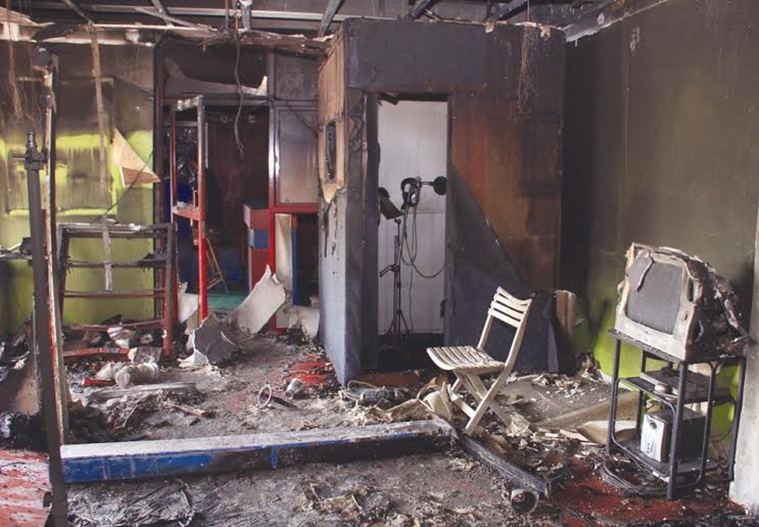

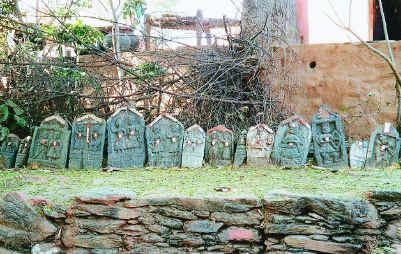

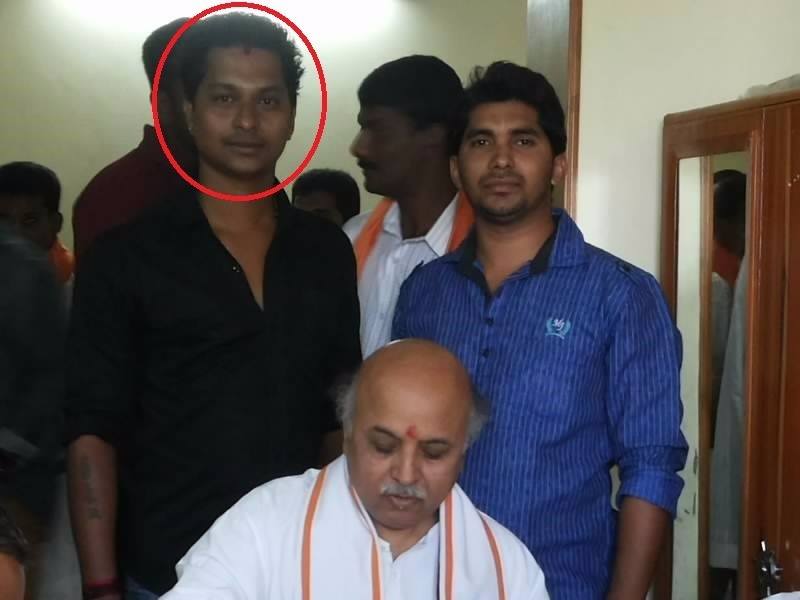
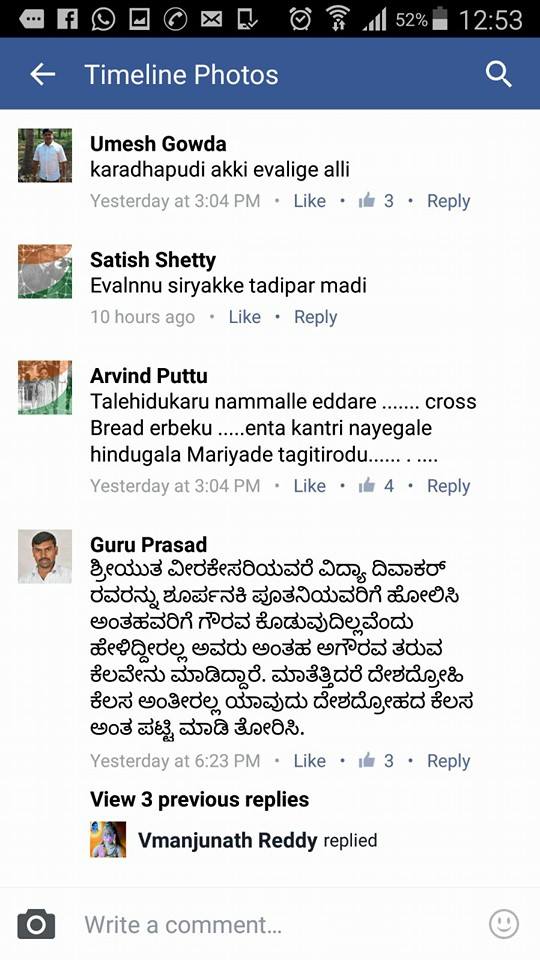
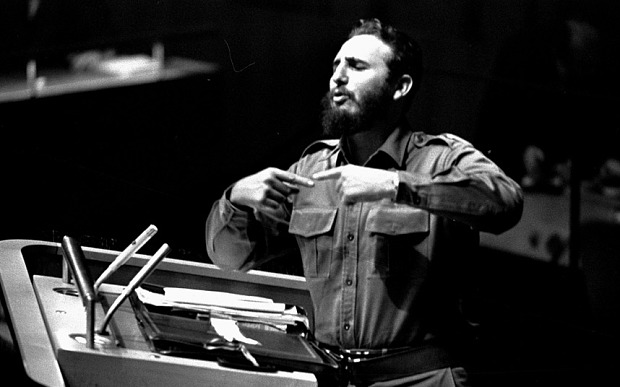

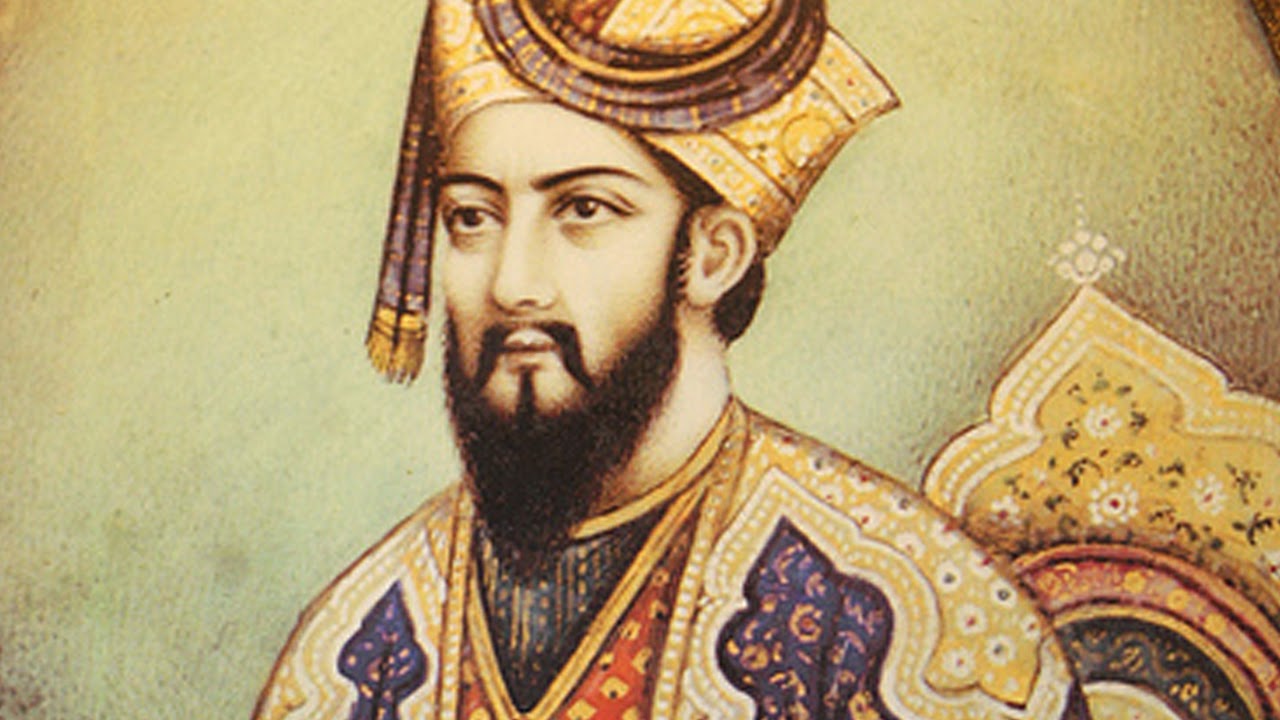
.jpg)
